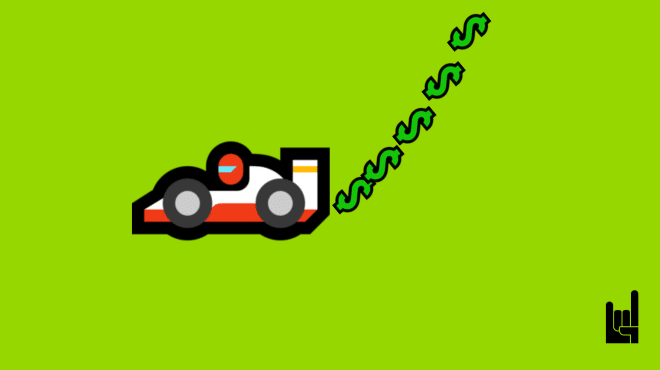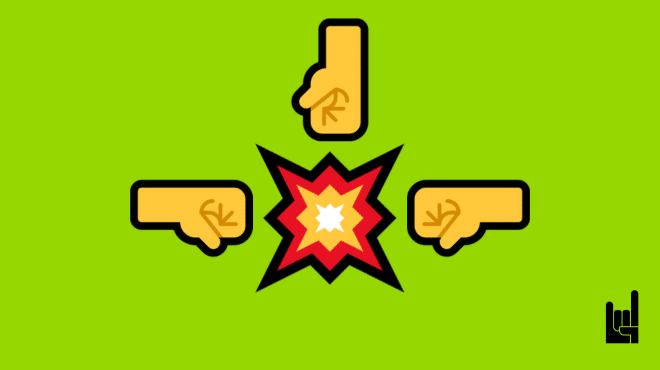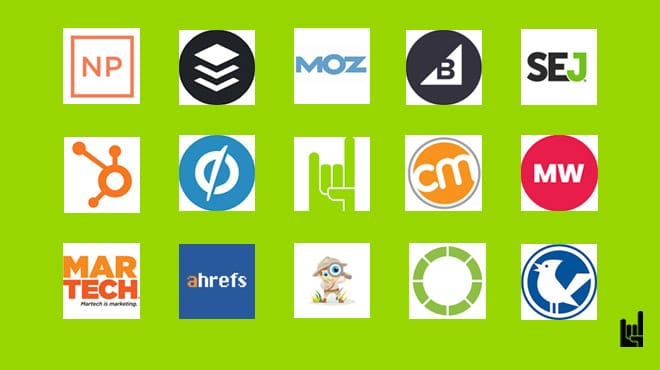On the one hand, you reach out to potential leads, through emails, advertising, and social media DMs.
On the other hand, you have leads reaching out to you through content created for this purpose beforehand. And content is not only the backbone of many inbound marketing strategies but also the driving force behind any lead-generation mechanism.
Here are 7 lead generation ideas to put that force to good use.
1. Blog posts & Articles
It’s no secret that posts and articles are the bedrock of effective content marketing. By offering valuable insights and solutions you can build trust and credibility, which is a basic component of lead generation.
However, creating content for the sake of it won’t get you very far. This is where SEO comes into the picture, as content marketing and SEO go hand in hand. SEO is the channel through which most users will discover your content so you need to make sure that it can rank on the search engines.
Regarding the blog posts themselves, their main purpose is to address customer pain points and provide solutions. For example, our digital marketing blog offers insight and expertise for all things related to digital marketing. Accordingly, a health & wellness blog would address challenges such as achieving a work-life balance or building healthy habits.

Tips for effective blogging
If you want your content marketing to have more impact, keep these tips in the back of your head:
Keyword research: Understand the terms your audience is searching for and incorporate them naturally into your content. Through keyword research, you will align your writing to your audience’s search intent.
Strategic CTAs: Include calls-to-action (CTAs) within your content. Guide users to the next steps in the customer journey, effectively moving them down the content marketing funnel.
Downloadable content upgrades: Provide additional value with downloadable resources like eBooks, guides, or templates. Which brings us to the next point.
2. eBooks & Whitepapers
A more special version of a blog post or article is eBooks and whitepapers. These comprehensive pieces of content provide an in-depth exploration of specific topics, created for users who are looking for a more thorough insight.
In contrast to blog posts and articles, eBooks and whitepapers created for lead generation are not publicly accessible. They are usually gated behind a form, and to gain access, users have to insert their email address, and sometimes other info as well.
Tips for effective eBooks & whitepapers
The perfect recipe for well-crafted eBooks and whitepapers includes:
Outline the content: Plan the content by creating a clear structure and outline. Ensure the content is well-organized, easy to read, and provides a clear message.
Formatting and design: Formatting and design play a critical role in the success of an eBook or whitepaper. Use simple, clean design elements, and an easy-to-read font.
Provide actionable takeaways: Make sure your eBook or whitepaper provides actionable takeaways that your audience can put into practice. Offer practical advice and tips, and include a call to action.

3. Templates
From B2B graphic design templates for social media assets to B2C email proposals, templates bridge utility with lead generation. These customizable frameworks serve as valuable resources for your audience.
Like eBooks and whitepapers, templates are excellent lead magnets, making them a strategic entry point in the lead-generation funnel.
Tips for effective templates
Most well-crafted tick most, if not all, of these boxes:
Solve a problem: Your template should help users solve a problem or overcome a challenge. Sometimes, the more specific the problem the template solves, the better.
Provide a sneak peek: Offering a glimpse of the template’s content helps users assess them before giving any of their information—or time.
Collect minimal information: Asking for too much information is a huge turn-off for most users. Asking for an email and a name should suffice. Often, just asking for the former is enough.
Easy customization: Ensure that your templates are user-friendly and easy to customize. Users should be able to personalize the template quickly to meet their specific needs.

4. Contests & Giveaways
Like any inbound marketing agency worth its salt will tell you, tests and giveaways aren’t just about freebies—they’re about creating meaningful connections with your audience. These have emerged as not only effective mechanisms for engaging with your audience, but they are also building brand awareness, and generating leads.
Whether you are a small startup or a corporate giant, there are many different ways on how to run a contest or giveaway:
- Sweepstakes: Participants enter to win a prize by providing contact information
- Photo contests: Engaging customers by making related photo submissions
- Referral contests: Encouraging existing customers to refer new ones for a chance to win
- Quizzes/ Surveys: Using interactive content to gather contact information
- Giveaways: Awarding prizes based on specific criteria, such as correct answers or prompt responses.
- Video Contests: Encouraging participants to create and submit videos related to a theme.
- Social media contests: Harnessing the reach of social media for engagement and lead generation
Tips for effective contests & giveaways:
To create a successful campaign, there are a few key principles you need to follow:
Choose the right type: Select a contest or giveaway type from those mentioned above and make sure that is aligned with your kind of business and target audience.
Offer a valuable prize: Motivate participation with a relevant and enticing prize.
Simplify entry: Ensure easy participation to encourage a higher number of entrants.
Promote, promote, promote: Use every marketing channel you have at your disposal.
Encourage sharing: Foster virality by prompting participants to share the contest with their network.
Measure success: Track metrics such as website traffic, lead generation, and engagement to assess performance.
5. Ask Me Anything (AMA)
These interactive sessions are becoming more and more popular and for a good reason. AMAs provide a unique opportunity for businesses to connect with their audience directly, putting authenticity at the forefront.
In an AMA session, participants share their experiences, challenges, and opinions while seeking answers. And the host is providing these answers while showcasing their knowledge and authority in the industry. The end result? User-generated content that is relevant, authentic, and valuable—the perfect recipe for lead generation.
Tips for an effective AMA session
Here are a few things to keep in mind for your next AMA session:
Consider the platform: Choose a platform that is well-suited to your audience and the nature of the AMA. The most popular choices are Reddit, Twitter, and Zoom.
Set clear guidelines: Decide on the rules and guidelines for the AMA, such as whether anonymous questions will be allowed. Let your audience know them in advance.
Promote the AMA: Build anticipation for the AMA by promoting it across all your channels. Introduce the participants and the topic to generate interest.
Engage with the audience: The very essence of AMA. Actively engage with the audience by responding to questions in a timely and authentic manner. Encourage open and honest communication
Follow up: Last but not least, after the AMA, don’t forget to follow up with the audience. Thank them for their participation and address any remaining questions or concerns.
6. Case studies
Unlike generic marketing content, case studies are rooted in real-world scenarios. And that’s their true power. Case studies showcase how your products or services helped solve a particular problem for a client, providing a tangible and relatable story for anyone engaging with it.
The concrete examples presented in case studies give prospects a clear understanding of the practical benefits they can expect. In turn, that makes them one of the best pieces of content to demonstrate demonstrating value and create brand authority. Through the lens of a case study, prospects can visualize how you can help them in a similar way. In essence, case studies act as a practical and persuasive tool, making them an excellent content type for effective lead generation.
Tips for an effective case study
Like every kind of narrative, case studies have their own set of rules that need to be followed:
Tell a story: A case study is a story: it features a beginning, a middle, and an end. There’s the hero’s journey with the hero being the brand that faced a challenge and managed to overcome it with the help of a product or service.
Provide before and after examples: Show, don’t tell. Include specific results and data to demonstrate the impact of your product or service. Use real-world proof to show how your product works and gets results.
Make it easy to read: Use clear formatting and casual language to make your case study easy to read. Most case studies are two pages to five pages long with clear sections that a reader can skim to find the information most important to them
Include a call to action: The necessary puzzle piece of every kind of content. Finish off with a call to action to contact your business and/or a link to view more case studies. Encourage readers to take the next step and learn more about your product or service.

7. Landing pages
If blog posts serve as the informative pillars of content marketing that drive acquisition, then landing pages act as the pillar’s capital—the point where all pillars need to end up. They should be designed with one thing in mind: to convert.
Be it signing up for a newsletter, downloading a resource, or making a purchase, the mission of a landing page is to ensure that a user is directed toward a specific action.
Tips for an effective landing page
All well-crafted landing pages share a few common characteristics:
Clear value proposition: The headline should convey the value of the offer and match the CTA on the page.
Compelling headline: Capture attention with a compelling and relevant headline that’s aligned with the user’s intent or pain points.
Keep the page clean: Avoid unnecessary distractions, excessive text, and clutter.
Concise copy: Write clear, persuasive copy that highlights the benefits and encourages action. Use short paragraphs, bullet points, and bold text to make the content easily scannable.
Compelling CTA: Ensure the CTA stands out visually on the page and that the copy uses action-oriented language, such as “Get Started,” “Download Now,” or “Sign Up Free.”.
Conclusion
Hopefully, these lead-generation ideas will get you started.
At the end of the day, if you need to remember one take-away, is that lead generation through inbound marketing is all about giving value first.
If you are looking for more ways to help to create lead generation consider booking a free consultation or sending us an email. We’d love to hear from you!

I write for GrowthRocks, one of the top growth hacking agencies. For some mysterious reason, I write on the internet yet I’m not a vegan, I don’t do yoga and I don’t drink smoothies.



